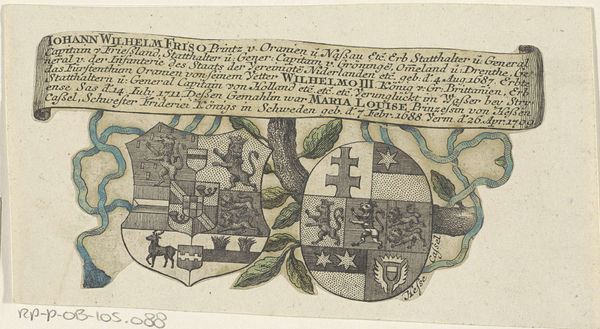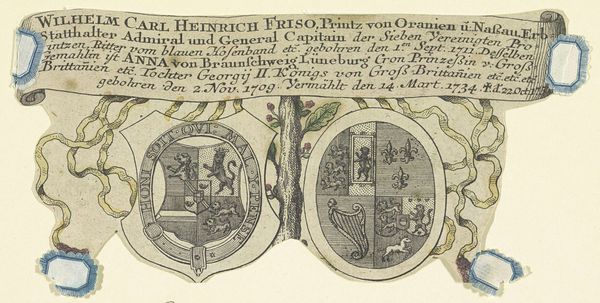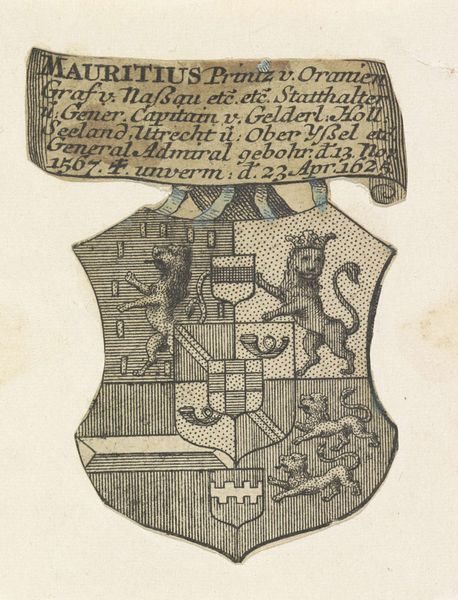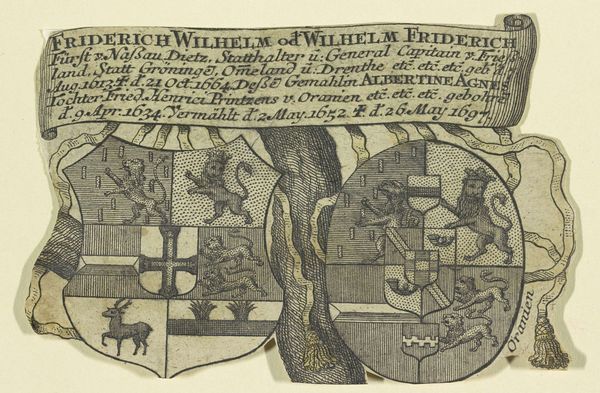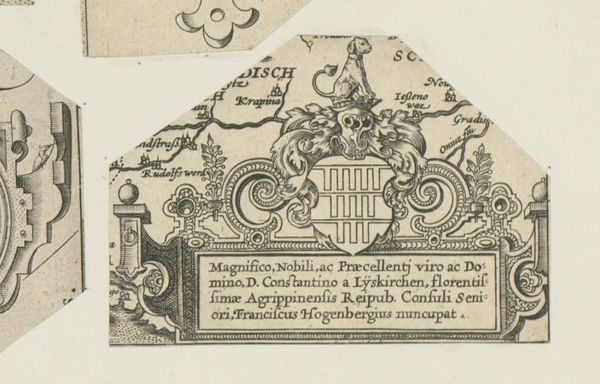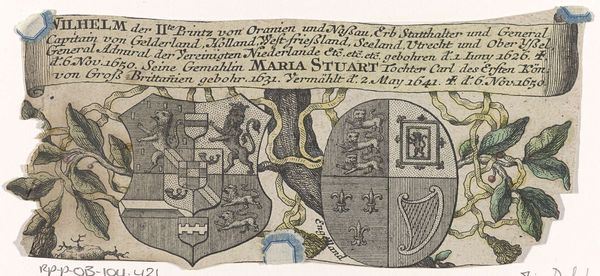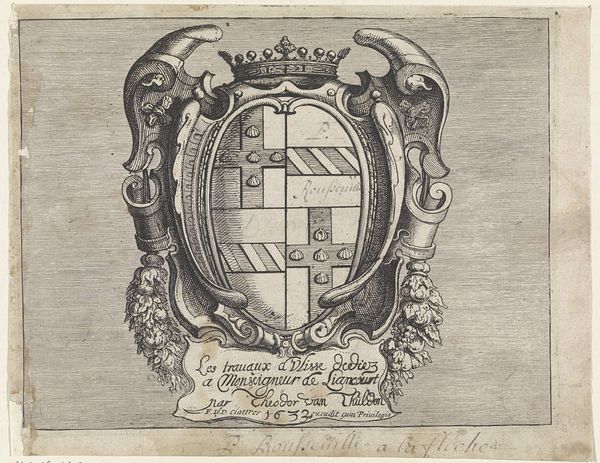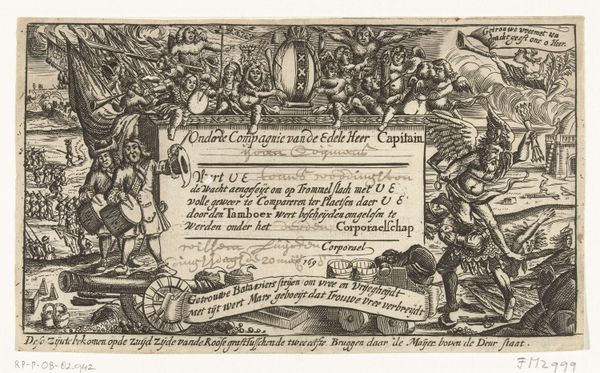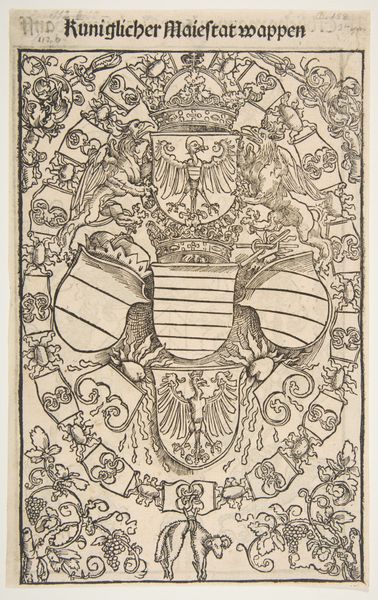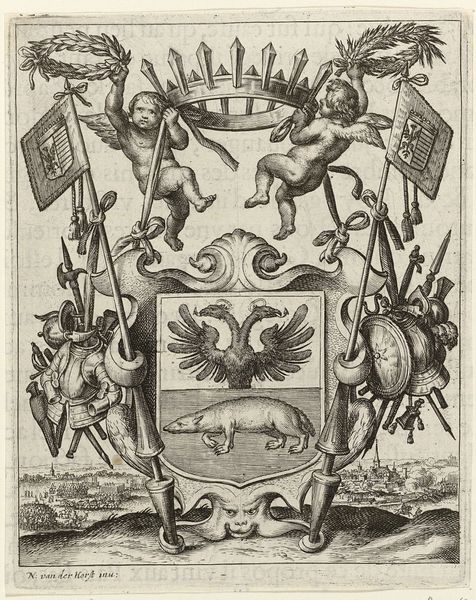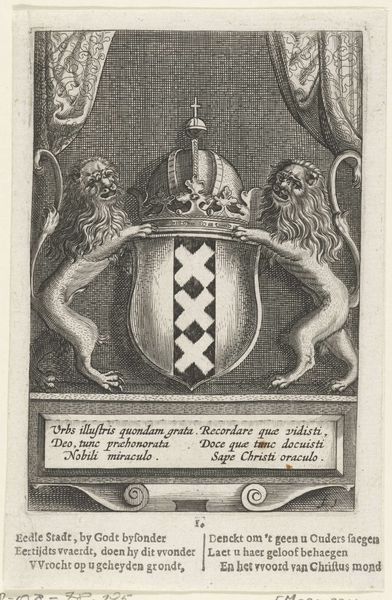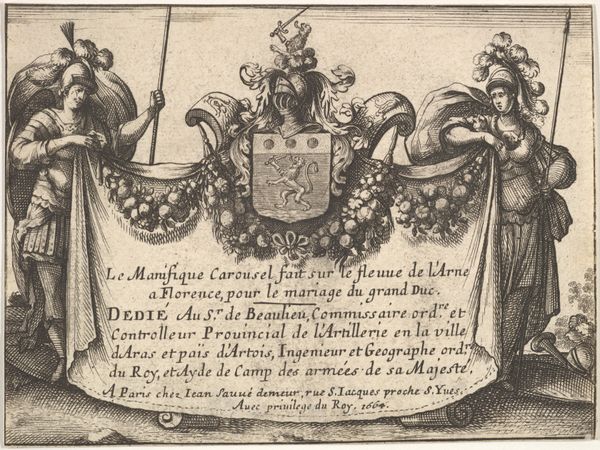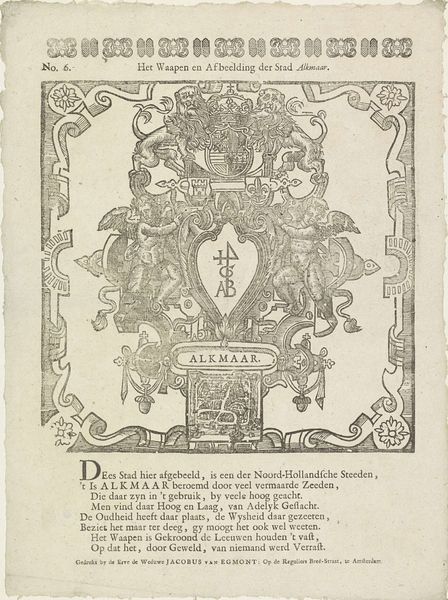
Wapens van Hendrik Casimir II, graaf van Nassau-Dietz, en Henriëtte Amalia van Anhalt-Dessau 18th century
0:00
0:00
Dimensions: height 75 mm, width 165 mm
Copyright: Rijks Museum: Open Domain
Editor: Here we have "Wapens van Hendrik Casimir II, graaf van Nassau-Dietz, en Henriëtte Amalia van Anhalt-Dessau," an 18th-century print. It feels like an official declaration of some kind, dominated by the two coats of arms. I'm curious, what story do these emblems and inscription tell? Curator: This engraving encapsulates a crucial period of state formation in the Dutch Republic. The prominent display of heraldry isn't just decorative; it’s a visual assertion of power and lineage during a time of political and social upheaval. Consider how these symbols functioned within a society deeply invested in inherited authority yet grappling with republican ideals. Editor: So, the arms are more than just pretty pictures; they’re actually making an argument? Curator: Precisely. Each element – the lions, the fortress, even the calligraphy itself – was legible to a specific audience. It conveyed a claim to legitimacy. The text details their titles and territories. But think about the placement of this piece: was it hung in a public space, meant to impress onlookers, or in a more private setting, reinforcing familial ties? Editor: I see what you mean. Understanding its location would definitely change how we read it. It's not just about the couple, but also about the projection of their power and identity. What does that specific combination of images convey? Curator: These elements embody their claims to governance, both individually and jointly as a ruling family. The choice of imagery reinforces ties to specific regions. This print, therefore, operates as a carefully constructed piece of political communication. Now, thinking about its creation in the 18th century, long after their death, how might later generations have reinterpreted this visual statement of power? Editor: Wow, it's more layered than I thought. It shows how the symbols of power are strategically employed. Curator: Exactly, and that understanding makes engaging with art so exciting and important! Editor: Absolutely. Looking at this artwork, I realize that heraldry isn’t a dead language at all; it’s a way to understand the politics of image-making throughout history.
Comments
No comments
Be the first to comment and join the conversation on the ultimate creative platform.
